How Can Chiaroscuro be Used in Art
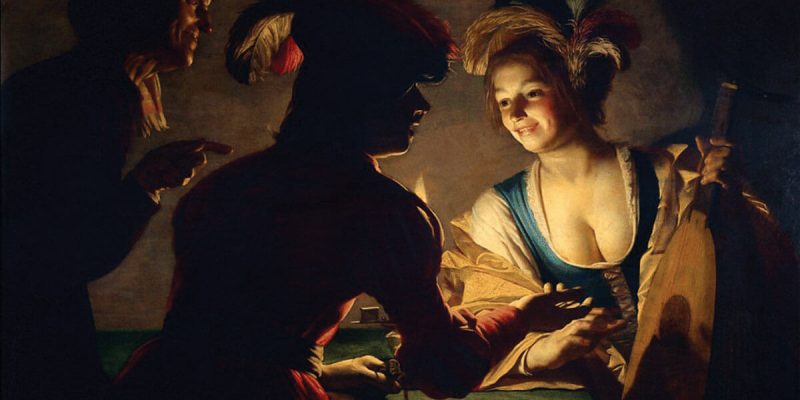
Chiaroscuro, the artful dance of light and shadow, has mesmerized audiences for centuries, adding depth and drama to countless masterpieces.
In this blog, we’ll explore how three iconic masters—Caravaggio, Rembrandt, and John Singer Sargent—mastered this technique.
From Caravaggio’s striking contrasts to Rembrandt’s emotional depth and Sargent’s subtle nuances, discover how these artists transformed their works and left a lasting impact on the art world.
Join us as we uncover the timeless lessons of chiaroscuro that continue to inspire today.
Table of Contents
Caravaggio: The Master of Drama and Realism
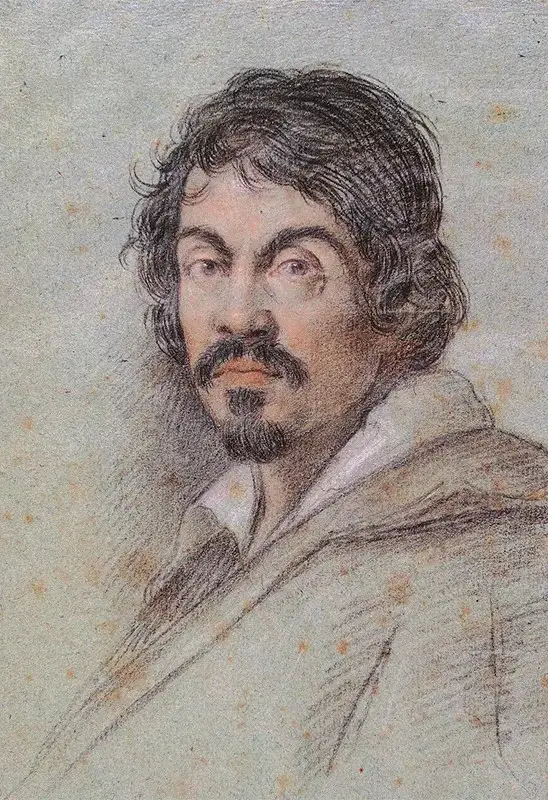
Michelangelo Merisi da Caravaggio, known simply as Caravaggio, is perhaps the most famous practitioner of chiaroscuro.
His innovative approach during the Baroque period infused his paintings with a heightened realism and dramatic intensity that set him apart from his contemporaries.
In many ways, Caravaggio redefined how light and shadow could tell a story on canvas, making his works timeless examples of chiaroscuro’s potential in art.
Here are two outstanding examples of how he used cgiaroscuro in his work:
The Calling of Saint Matthew
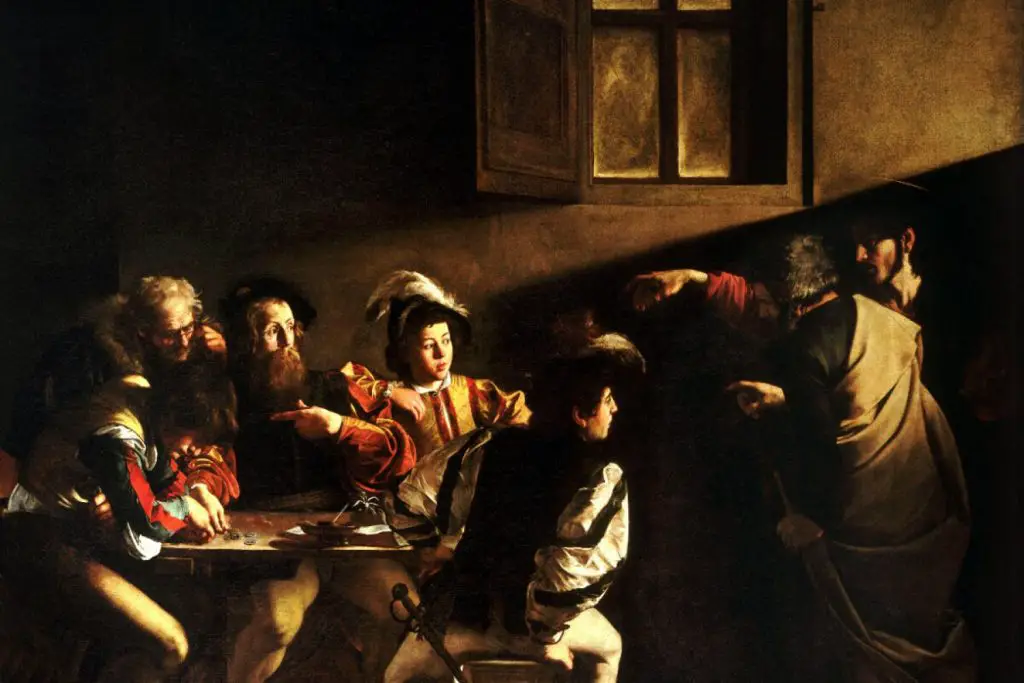
In The Calling of Saint Matthew (1600), Caravaggio illustrates the moment when Christ calls Matthew to become his disciple.
The painting is set in a dimly lit room, with a single shaft of light piercing the darkness from the right.
This beam of light symbolizes divine intervention, highlighting Matthew and casting parts of the figures into shadow.
The effect creates a strong visual focus on Matthew’s surprised expression as he is called, underscoring the significance of this transformative moment.
Caravaggio uses light as a narrative device to distinguish between the ordinary and the divine.
The dark, muted background accentuates the figures in the foreground, while the high contrast between light and shadow brings an almost sculptural quality to the scene.
In particular, the light that illuminates Christ’s hand as he points towards Matthew not only emphasizes the gesture but also serves as a metaphor for spiritual awakening, making the divine palpable within the context of an everyday environment.
Judith Beheading Holofernes
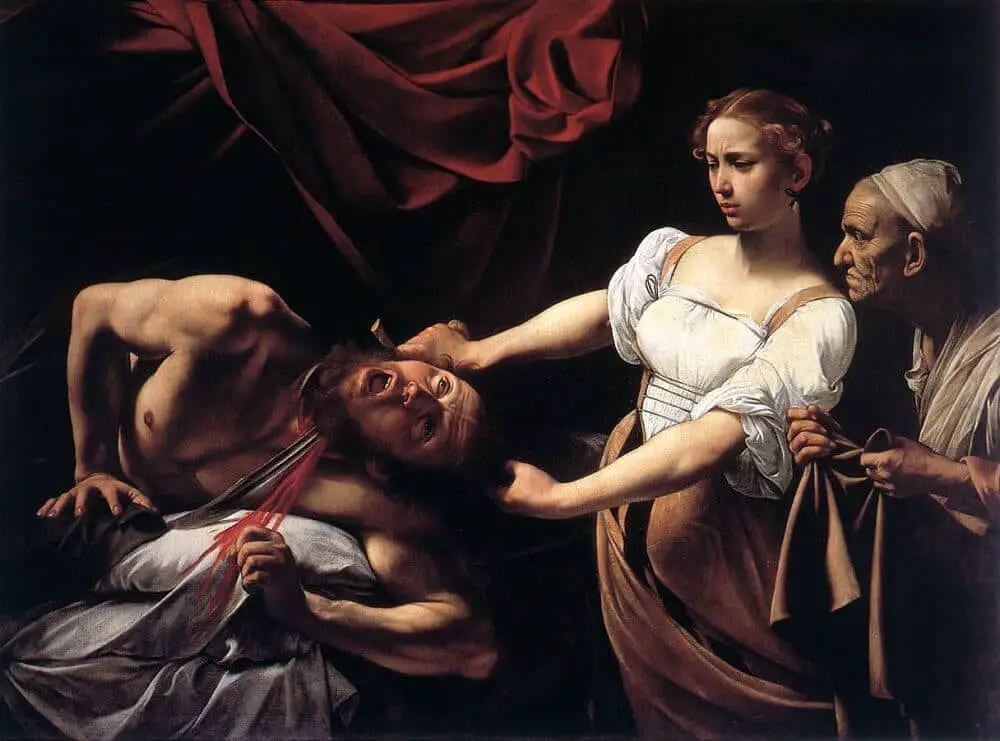
In Judith Beheading Holofernes, Caravaggio brings another layer of psychological intensity to the story of Judith slaying the Assyrian general, Holofernes.
Here, chiaroscuro amplifies the brutality and emotional depth of the scene. The concentrated light captures the pained expression on Holofernes’ face as well as Judith’s focused, determined gaze.
By enveloping much of the background in darkness, Caravaggio keeps the viewer’s attention tightly on the central action, creating an immediacy that is both unsettling and captivating.
The harsh lighting in Judith Beheading Holofernes also underscores the psychological duality within Judith as she transitions from a composed, noble figure to a reluctant executioner.
The shadows wrapping around her figure hint at the moral ambiguity and emotional weight of her actions, using chiaroscuro to communicate an internal struggle as much as the physical one.
Rembrandt: The Subtle Touch of Light
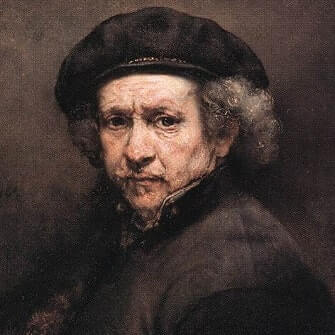
While Caravaggio’s use of chiaroscuro is intense and theatrical, Dutch master Rembrandt van Rijn’s approach is softer, more contemplative.
Rembrandt, a prominent figure in the Dutch Golden Age, is celebrated for his nuanced use of chiaroscuro to explore human emotion and psychological depth.
His mastery lies not only in his ability to contrast light and shadow but also in his attention to the subtle gradations that create a sense of warmth and intimacy.
Here are two keys works from Rembrandt that demonstrate his mastery of chiaroscuro:
The Night Watch
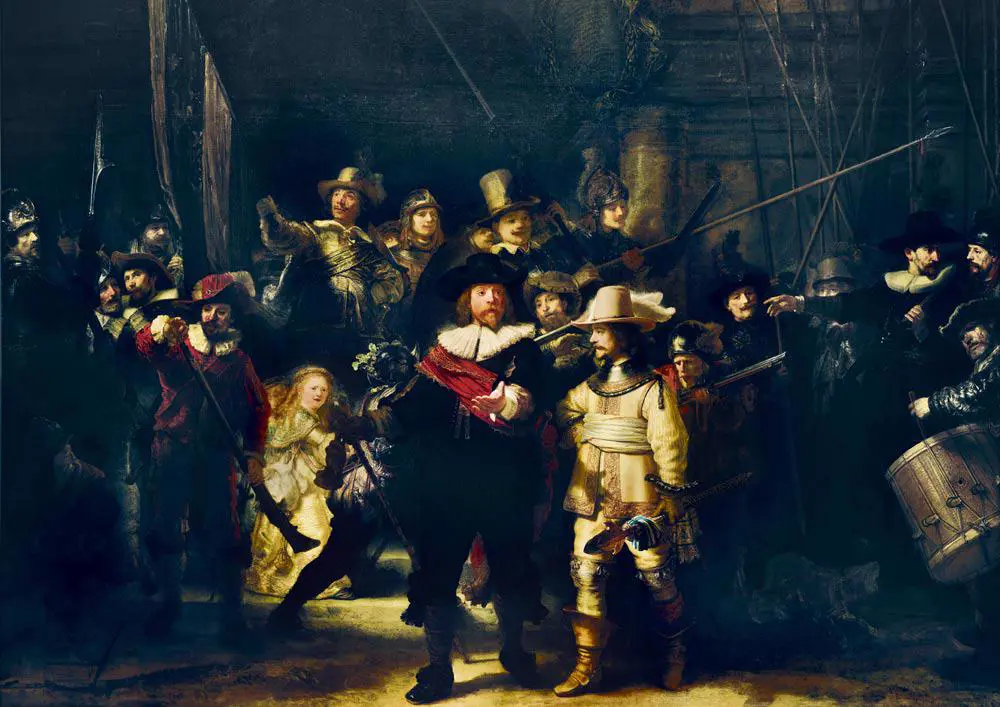
Rembrandt’s The Night Watch (1642) is a prime example of how he uses chiaroscuro to direct viewers’ attention and build layers of meaning within a complex composition.
The painting, a group portrait of a civic militia, is set against a shadowy background, with light strategically illuminating key figures.
The golden tones on Captain Frans Banning Cocq and Lieutenant Willem van Ruytenburch emphasize their importance and rank, guiding the viewer’s eyes immediately to them.
The lighting is not only a compositional tool but also a psychological one; the selective highlights create a sense of depth and activity, giving the scene a lively, almost cinematic feel.
The softer light around the edges contrasts with the intense focus on the central figures, drawing viewers into the depth of the painting.
The play of light and shadow creates a dynamic sense of movement, reinforcing the impression of a moment frozen in time.
Self-Portrait with Two Circles
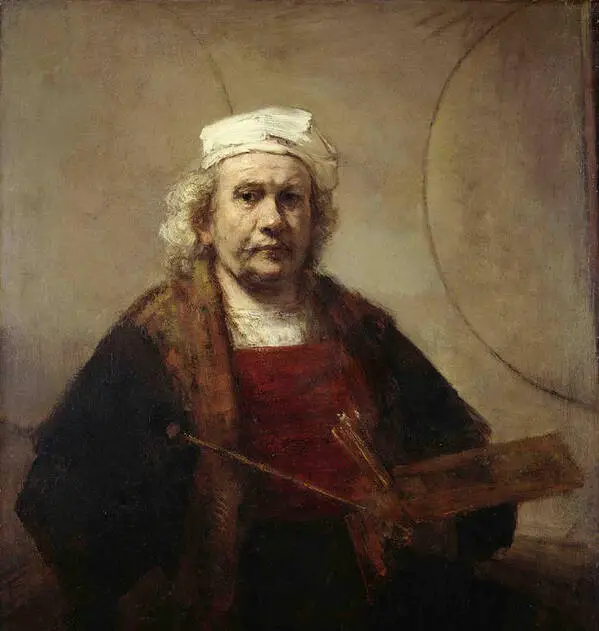
In Self-Portrait with Two Circles (1665-1669), Rembrandt uses chiaroscuro to convey self-reflection and the emotional weight of his later years.
His face is partially illuminated, with the light falling directly on his thoughtful expression, while his body and background fade into shadow.
The circles, faintly visible in the background, are symbols of artistic mastery, possibly representing the perfecting of his craft.
Rembrandt’s use of chiaroscuro here emphasizes the passage of time, with the light highlighting the wrinkles on his face and the wisdom in his gaze.
By leaving parts of the painting obscure, he creates a sense of mystery and introspection, using light and shadow to hint at the complexities of his personality and career.
This subtle use of chiaroscuro aligns the viewer with the artist’s introspective mood, making it a deeply personal and evocative work.
John Singer Sargent: The Interplay of Light and Character
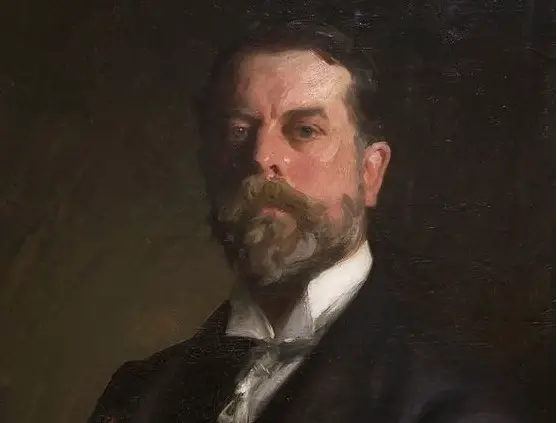
John Singer Sargent, a master portrait artist of the late 19th and early 20th centuries, brought a unique approach to chiaroscuro.
Known for his sophisticated portraits of society figures, Sargent used chiaroscuro not only to shape his subjects but also to reveal aspects of their character.
His compositions often employed soft contrasts, using light to create an impressionistic feel while emphasizing the subtleties of facial expressions and postures.
Let’s see how sargent uses these techniques in two of this master pieces:
Madame X
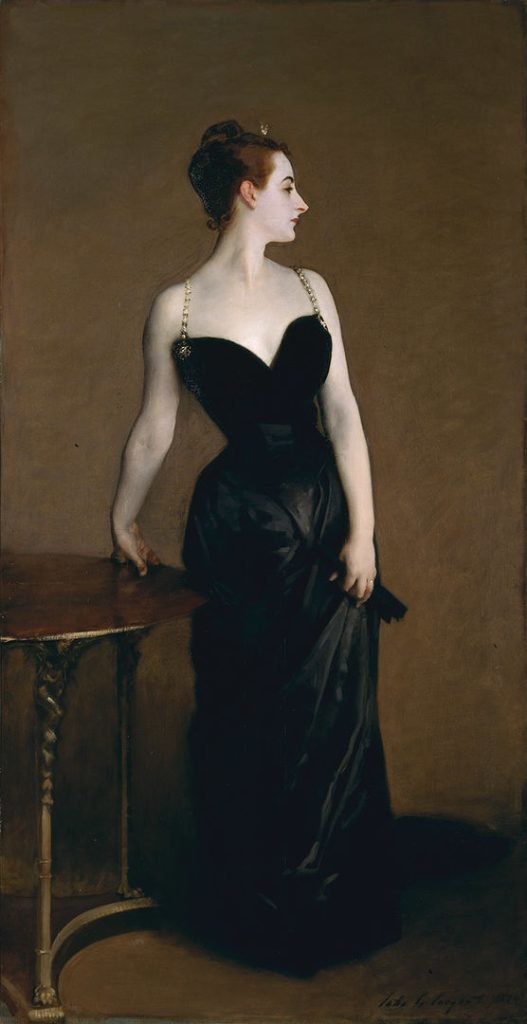
In Portrait of Madame X (1884), Sargent employs chiaroscuro to portray Madame Gautreau as a figure of beauty, mystery, and strength.
The light accentuates her pale skin against the dark background, drawing attention to her elegant, confident posture and distinctive profile.
This contrast not only enhances her striking appearance but also gives her a statuesque quality, emphasizing her as both a person and an icon of beauty.
The dark background and subtle shadows enveloping her figure create a sense of allure and enigma, making Madame Gautreau seem both present and removed, as if she’s a distant figure illuminated for admiration.
By using chiaroscuro to control the intensity of light, Sargent invites viewers to focus on the figure’s surface beauty while leaving room to question what lies beneath, symbolizing the societal fascination with—and expectations of—women of her status.
Lady Agnew of Lochnaw
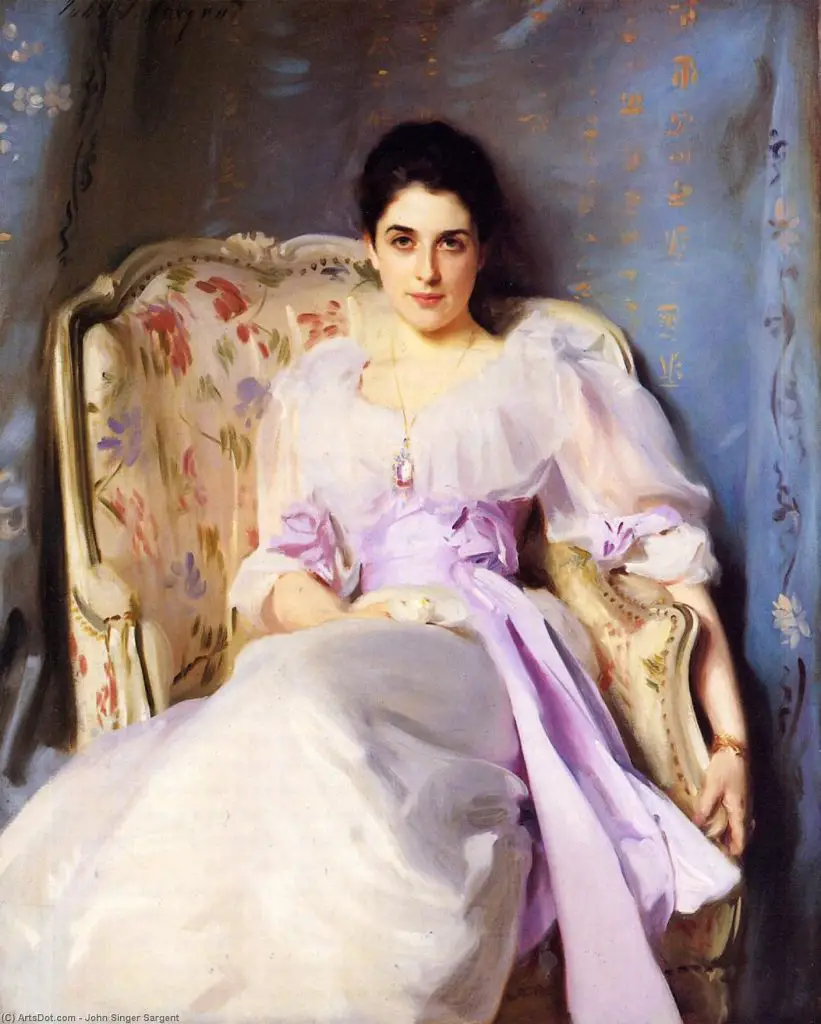
In Lady Agnew of Lochnaw (1892), Sargent uses chiaroscuro in a more subtle, refined way.
Here, the contrasts are softer, capturing a sense of lightness and intimacy that draws the viewer closer to the subject.
Lady Agnew is seated in a relaxed pose, her face softly illuminated, while the shadows in the background recede, giving her a sense of prominence.
The delicate use of light and shadow around her face and shoulders lends her a refined, introspective quality, making her appear approachable yet reserved.
Through chiaroscuro, Sargent conveys a quiet dignity and depth, emphasizing her poise and intelligence.
This subtle play of light and shadow invites viewers to look beyond the surface, sensing the personality and life behind the socialite exterior.
Concluding Thoughts on How Chiaroscuro Can be Used in Art
Through the works of Caravaggio, Rembrandt, and Sargent, we see chiaroscuro’s transformative potential in art.
Caravaggio’s intense contrasts evoke the drama and immediacy of a scene, heightening its emotional impact.
Rembrandt’s nuanced approach creates a sense of depth and introspection, allowing viewers to connect with his subjects on an emotional level.
Meanwhile, Sargent’s sophisticated, softer contrasts emphasize elegance and character, revealing the personalities and social nuances of his subjects.
Chiaroscuro is more than a technique; it’s a visual language that shapes perception, conveys emotion, and engages the viewer.
Whether used for dramatic effect, introspective depth, or subtle character insights, chiaroscuro continues to be a foundational element that artists draw upon to bring their work to life.
Each of these artists demonstrates how light and shadow can serve as more than mere compositional elements—they can transform, define, and elevate the entire experience of art.
References
- Chernick, K. (2024, February 21). Who was Caravaggio and why was he so important? ARTnews.com. https://www.artnews.com/list/art-news/artists/who-was-caravaggio-baroque-artist-life-and-art-1234696011/
- Caravaggio’s “The Calling of Saint Matthew.” (n.d.). Prime Matters. https://primematters.com/foundations/enrichment/caravaggios-calling-saint-matthew
- Judith Beheading Holofernes, 1599 by Caravaggio. (n.d.). Caravaggio. https://www.caravaggio.org/judith-beheading-holofernes.jsp
- Rembrandt Paintings. (n.d.). Rembrandt Paintings. https://www.rembrandtpaintings.com/
- Puzzle Rembrandt: The Night Watch, 1642, 1 000 pieces. (n.d.). https://www.puzzle-usa.com/rembrandt-the-night-watch-1642-1000-pieces-bluebird
- Helen, V. a. P. B. (2011, November 11). Self Portraits: Exploring artist’s use of the Self-Portrait. Personal Interpretations. https://personalinterpretations.com/2011/11/11/self-portraits-exploring-artist%E2%80%99s-use-of-the-self-portrait/
- Hugues, L. (2021, April 27). John Singer Sargent – a master of portrait technique — Linda Hugues. Linda Hugues. https://www.lindahugues.com/blog/john-singer-sargent-portrait-technique
- Revealing Madame X. (2022, August 1). The Metropolitan Museum of Art. https://www.metmuseum.org/about-the-met/conservation-and-scientific-research/conservation-stories/2020/madame-x
- John Singer Sargent – Lady Agnew of Lochnaw. (n.d.). https://en.artsdot.com/@@/8XYCB9-John-Singer-Sargent-Lady-Agnew-of-Lochnaw
- Samuels, A. (2024, May 2). What is chiaroscuro? definition and its intriguing history in art. Art Ignition. https://artignition.com/what-is-chiaroscuro/
- The Editors of Encyclopaedia Britannica. (n.d.). Baroque period summary | Britannica. Encyclopedia Britannica. https://www.britannica.com/summary/Baroque-art-and-architecture
- Snow, E. (2024, May 3). Top 7 Dutch Golden Age artists to know. TheCollector. https://www.thecollector.com/dutch-golden-age-artists/

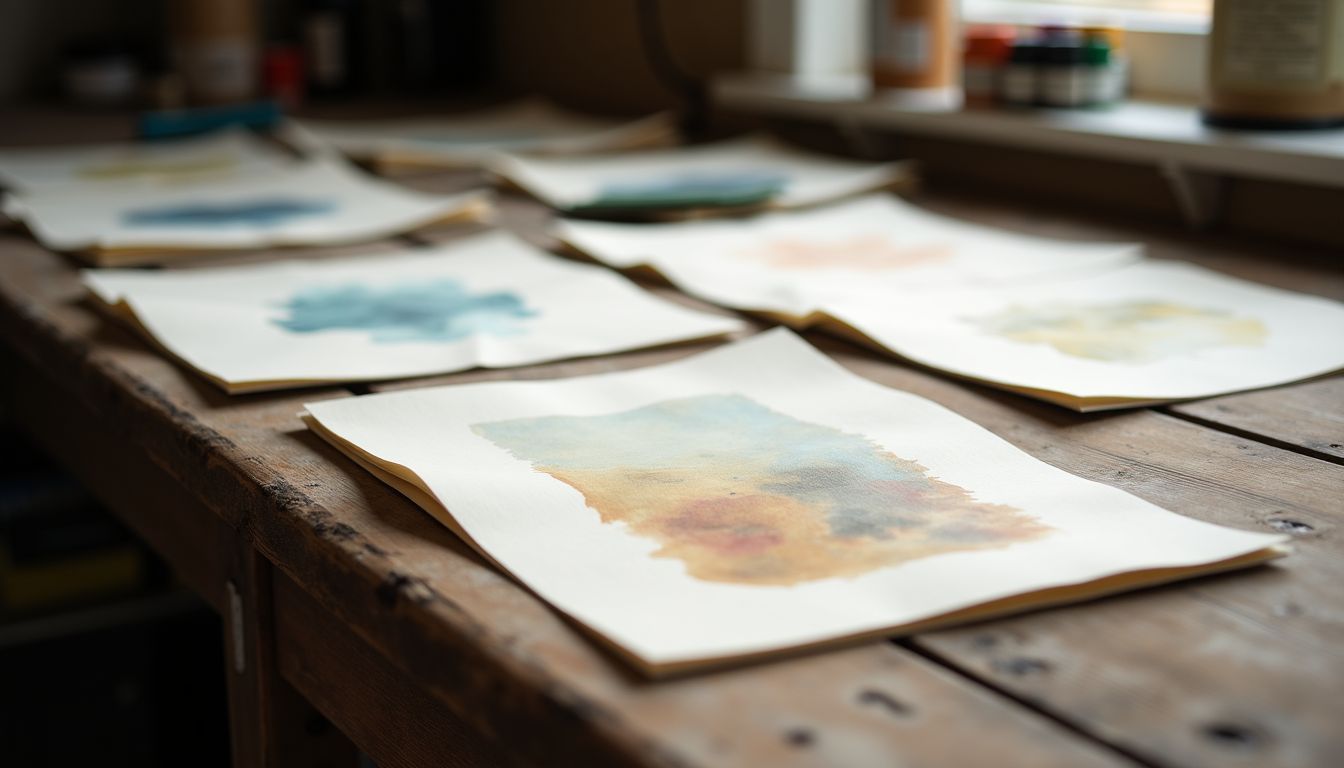

Leave a Reply